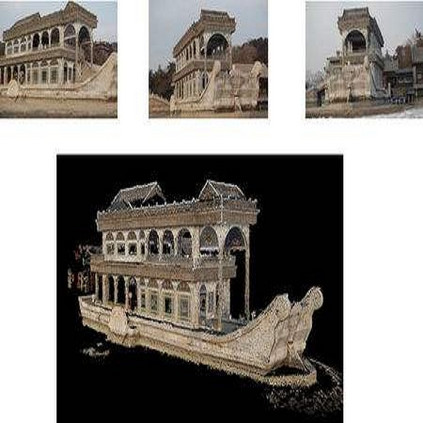Implicit neural representations have shown compelling results in offline 3D reconstruction and also recently demonstrated the potential for online SLAM systems. However, applying them to autonomous 3D reconstruction, where a robot is required to explore a scene and plan a view path for the reconstruction, has not been studied. In this paper, we explore for the first time the possibility of using implicit neural representations for autonomous 3D scene reconstruction by addressing two key challenges: 1) seeking a criterion to measure the quality of the candidate viewpoints for the view planning based on the new representations, and 2) learning the criterion from data that can generalize to different scenes instead of a hand-crafting one. To solve the challenges, firstly, a proxy of Peak Signal-to-Noise Ratio (PSNR) is proposed to quantify a viewpoint quality; secondly, the proxy is optimized jointly with the parameters of an implicit neural network for the scene. With the proposed view quality criterion from neural networks (termed as Neural Uncertainty), we can then apply implicit representations to autonomous 3D reconstruction. Our method demonstrates significant improvements on various metrics for the rendered image quality and the geometry quality of the reconstructed 3D models when compared with variants using TSDF or reconstruction without view planning. Project webpage https://kingteeloki-ran.github.io/NeurAR/
翻译:在3D离线重建中,隐含的神经表层显示了令人信服的结果,最近还展示了在线SLAM系统的潜力。然而,在3D自主重建中,机器人需要探索现场并规划重建的视图路径,而将这些数据应用到3D自动重建中,尚未对此进行研究。在本文件中,我们首次探索了将隐含的神经表层用于3D自主现场重建中的可能性,解决了两个关键挑战:(1) 寻求一个标准,以测量候选人观点的质量,根据新的表达方式进行视图规划;(2) 从数据中学习标准,从能够概括到不同场面而不是手动的3D重建中学习。首先,为了解决挑战,建议代用PSNRR(PER)来量化观点质量;第二,将代用隐含的神经网络参数进行最佳化。根据神经网络(称为神经不确定性)的拟议观点质量标准,我们随后可以对自主的3D重建应用隐含的表达式。我们的方法显示,在设定图像质量和地理-ARI Virma 模型进行重建时,不使用3DF模型进行重建。





